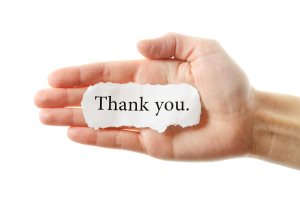5 Steps for a Charming Interview Follow-Up Technique

You’re right to be worrying about doing the right thing in regards to follow-up, because far too many people make the mistake of deciding it’s not really important. In truth, proper follow-up can positively make or break your chances of getting hired for a position you really want. Let’s take a closer look at how you can positively ace this part of applying for a job and beat out the competition once and for all.
Why Follow-Up Is So Important
Studies, statistics, and experts all agree: A strong follow-up helps ensure a potential employer that you’re the right one for a job. In fact, 15 percent of those in charge of hiring say that they wouldn’t even consider hiring someone who failed to follow up after an interview. A whopping 32 percent would actually think less of a given candidate because of lack of follow-up. Following up is more than just a courtesy. It’s good business; so, make sure it’s part of your plan.
Tips for a Solid Follow-Up
If you have a collection of business cards or contact information for the people you interviewed with, be sure to have them at the ready when you formulate your follow-up plan. Then keep these expert tips in mind for a follow-up that is sure to impress.
1. Thank You Card
Whether you interviewed online, over the phone, or the old-fashioned way in person, personalized thank you notes are always a great way to go. Make sure you send one to each of the people you interviewed with during the process. Thank you e-mails are also an appropriate choice.
2. Timeliness
Make sure you send your follow-up messages as soon as possible after every interview. Waiting too long can mean someone else has already been hired for the position by the time you get on the ball. Experts recommend following up within 24 hours.
3. Reiteration
Make use of your follow-up correspondence to refresh interviewers’ memories as to how much you want the job, what you bring to the table as a person, and why you’re the perfect choice in employees for their company. Underscore all of your relevant skills especially.
4. Second Chance
If there’s anything you wish you had mentioned or brought up during the interview, your follow-up correspondence is the perfect time to bring it up.
5. Proofread
Keep things concise, simple, and to the point. Definitely finish by thoroughly proofreading your correspondence for spelling and grammatical errors. They matter!
Your follow-up routine is so much more than a way to be courteous and express appreciation for an interviewer’s time and consideration. It’s a terrific way to make the best possible lasting impression and make sure you maximize your chance of landing your dream job once and for all.

